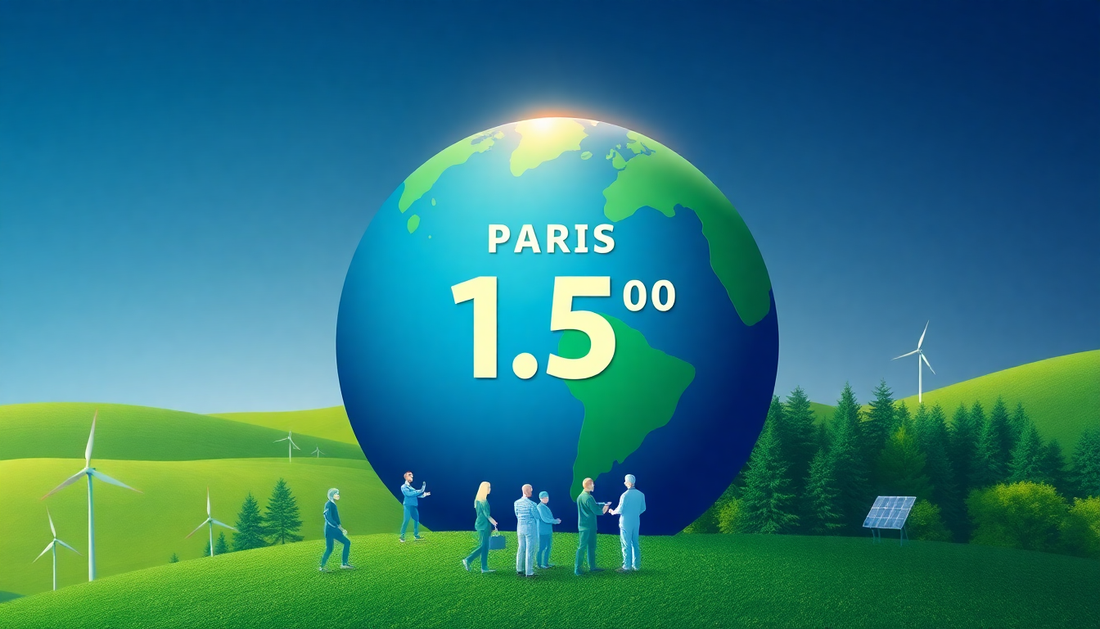The Paris Agreement, adopted in 2015, stands as a landmark global accord aimed at combating the devastating effects of climate change. At its core, this historic agreement sets forth a clear and ambitious goal: to limit global warming to well below 2°C above pre-industrial levels, and to pursue efforts to further restrict it to 1.5°C. As we approach the year 2025, the world finds itself at a critical juncture, facing the urgent task of meeting these crucial temperature targets.
The Significance of the Paris Agreement
The Paris Agreement represents a global consensus on the need for immediate and concerted action to address the climate crisis. By bringing together nearly 200 countries, the agreement has galvanized international cooperation and a shared commitment to reducing greenhouse gas emissions. The 1.5°C target, in particular, has become a rallying cry for climate activists and policymakers alike, recognizing the dire consequences of allowing global temperatures to rise beyond this threshold.
Key Temperature Goals
The Paris Agreement's temperature goals are not arbitrary; they are grounded in scientific evidence and a deep understanding of the profound impacts that climate change can have on our planet. The 2°C target is widely regarded as the upper limit for avoiding the most catastrophic effects of global warming, such as widespread ecosystem collapse, sea-level rise, and an increased frequency of extreme weather events. However, the 1.5°C target is considered the safer and more desirable goal, as it would significantly reduce the risks and severity of these climate-related impacts.
Emission Reduction Targets
To achieve these temperature goals, the Paris Agreement calls for a clear and ambitious timeline for reducing greenhouse gas emissions. By 2025, the agreement stipulates that global emissions should peak and begin to decline. Furthermore, by 2030, emissions must be reduced by 43% compared to 2010 levels. These targets are crucial stepping stones towards the ultimate goal of net-zero emissions by the middle of the century.
Global Impact and Challenges
Despite the clear and urgent nature of the Paris Agreement's goals, the world is currently not on track to meet these targets. Global temperatures have already risen by approximately 1.1°C above pre-industrial levels, and the impacts of climate change are becoming increasingly evident, from melting glaciers and rising sea levels to more frequent and intense natural disasters. Achieving the necessary emission reductions will require a fundamental transformation of our energy systems, transportation networks, and industrial practices, as well as significant investments in renewable energy, carbon capture and storage technologies, and sustainable land-use practices.
International Cooperation
Addressing the climate crisis is a truly global challenge that requires unprecedented levels of international cooperation and coordination. While some countries have made significant strides in reducing their emissions, others have lagged behind, creating a patchwork of progress that undermines the overall effort. Bridging these gaps and fostering a shared sense of responsibility will be crucial in the years ahead, as countries work together to develop and implement innovative solutions.
Individual and Corporate Responsibility
Achieving the Paris Agreement's goals is not solely the responsibility of governments and policymakers; it also requires active participation from individuals and the private sector. From adopting sustainable lifestyle choices to investing in clean technologies and advocating for climate-friendly policies, everyone has a role to play in the fight against climate change. Businesses, in particular, have a significant opportunity to lead the way, by transitioning to renewable energy, reducing their carbon footprints, and incorporating sustainability into their core operations.
Conclusion
As we approach the critical year of 2025, the world stands at a crossroads. The Paris Agreement's climate goals are ambitious, but they are also necessary to safeguard the future of our planet and the well-being of generations to come. By working together, across borders and sectors, we can rise to the challenge and create a more sustainable, resilient, and equitable world. The time to act is now, and the stakes have never been higher.

